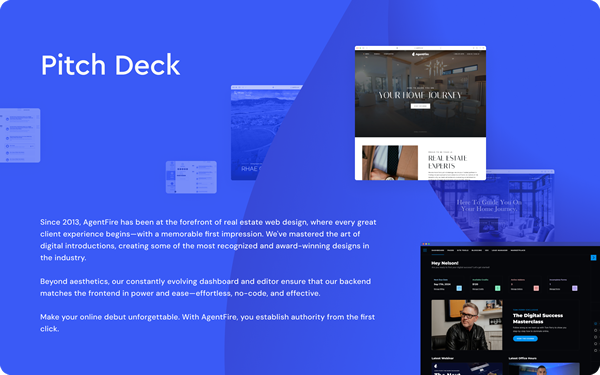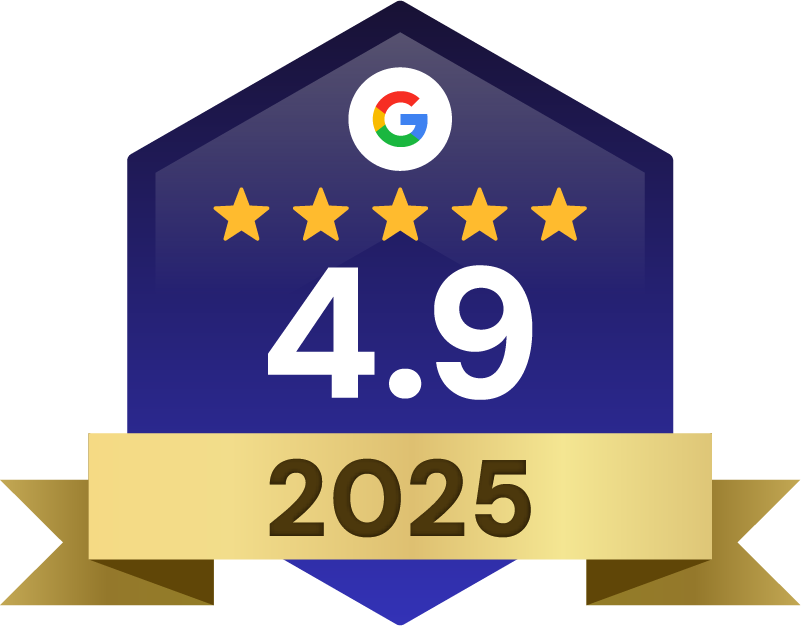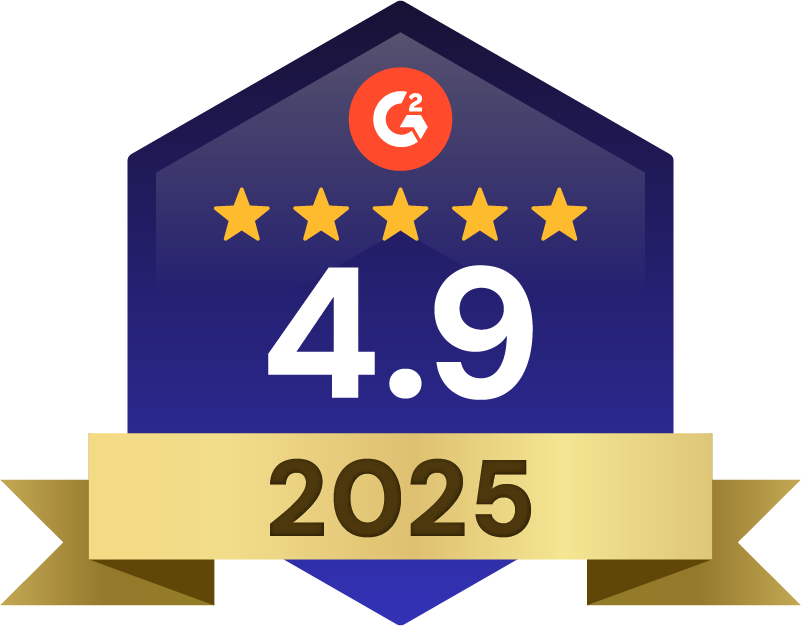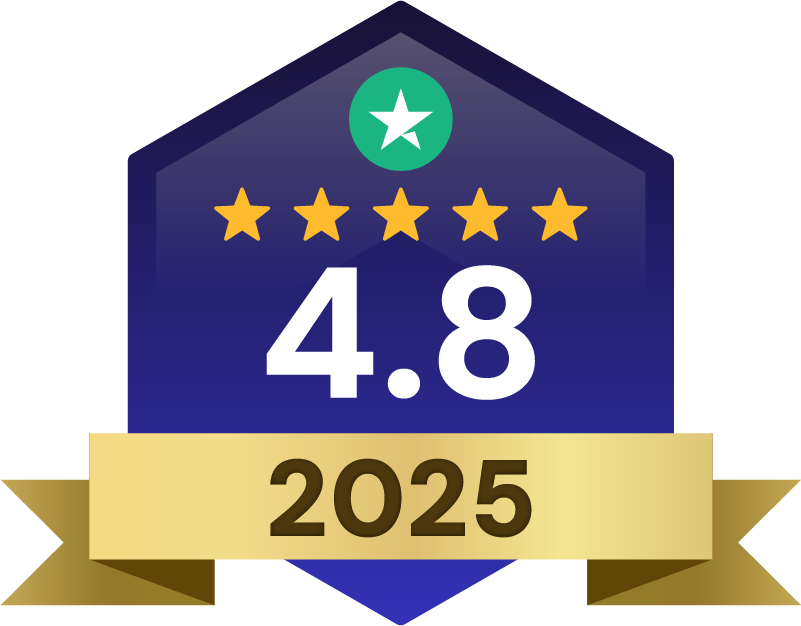Real estate website design best practices: Learn how to create fast, mobile-friendly, and visually appealing sites that convert visitors into leads.
Branding & Design Content Marketing Technology
Why Good Design Matters for Real Estate Websites
Website visitors form an opinion about a site in less than a second. That first impression often depends on design elements such as layout, color scheme, and spacing.
Studies show that a poorly designed website can cause users to leave immediately. Slow load times, cluttered pages, or confusing navigation increase bounce rates and reduce engagement.
There is a direct link between the quality of a website’s design and how professional the agent or brokerage appears. A clean, modern site communicates trustworthiness. An outdated or inconsistent design can cause users to question the credibility of the business.
Design also plays a role in lead generation. A well-structured site makes it easier for visitors to find listings, learn about services, and contact the agent.
In competitive real estate markets, a well-designed website helps agents stand out. It provides a platform to showcase expertise, listings, and market knowledge in a professional format.
The Business Impact of Brand-Focused Design
Research shows that brand-focused real estate websites deliver measurable results. Properties with strong branding tend to sell faster than generic listings, and well-branded agents can command higher prices due to perceived expertise. Homebuyers are more likely to work with agents who have professional, branded websites, and branded websites convert visitors to leads at higher rates than template-based sites.
These improvements translate directly to increased revenue and faster business growth for real estate professionals who invest in strategic brand design.
Build a Clear Visual Brand
Consistent visual branding helps users recognize and remember a real estate website. A brand identity includes specific elements such as color palette, typography, imagery style, and logo design.
A strong visual identity aligns all website elements with the brand’s message. It also improves user experience by creating familiarity across pages and devices.
When choosing colors for your real estate website, select 2-3 primary colors plus accent colors that work well together. Colors convey different messages:
- Blue: Communicates trust and stability, popular in real estate
- Green: Represents growth and new beginnings
- Black: Often associated with luxury and sophistication
- Red: Creates urgency and excitement but should be used sparingly
Professional logos and consistent fonts matter because they form the visual foundation of your brand. Sans-serif fonts like Open Sans or Roboto are popular for websites because they’re easy to read on screens.
Keep Navigation Simple and Mobile-Friendly
Website navigation is like a roadmap for visitors. When it’s complicated or confusing, people get lost and leave.
The most effective real estate websites limit main navigation to 5-7 items. Common menu items include:
- Home
- Properties/Listings
- About
- Services (Buyer/Seller)
- Communities
- Blog
- Contact
Mobile navigation requires special attention since most real estate searches now happen on phones. Touch targets (buttons and links) should be at least 48×48 pixels to prevent accidental taps.
When designing for mobile, place navigation where thumbs can easily reach. Most users hold phones in a way that makes the bottom and center of the screen most accessible.
Advanced Navigation Elements
Beyond basic menu structure, effective real estate websites include:
- Breadcrumb navigation: Shows users their location within your site hierarchy (Home > Communities > Downtown > Listings), especially important for neighborhood and property pages
- Footer navigation: Provides secondary access to important pages like privacy policy, terms of service, and additional resources
- Internal linking strategy: Connect related content (link neighborhood guides to relevant listings, blog posts to service pages) to keep visitors engaged and improve SEO
- Search functionality: Prominent property search with filters for price, location, and property type
- Agent profile access: Easy-to-find team member pages with individual contact information and specialties
These elements create multiple pathways for users to find relevant information, reducing bounce rates and improving conversion opportunities.
Use IDX Tools Strategically
IDX (Internet Data Exchange) allows real estate websites to display MLS listings. This technology is essential for providing property search functionality.
Basic IDX shows simple property details like price and bedrooms. Advanced IDX offers features like saved searches, email alerts, and map-based browsing.
Many visitors come to real estate websites specifically to search properties. Making this process intuitive and efficient improves user satisfaction and increases the chances they’ll return.
Showcase High-Quality Visuals
In real estate, visuals sell properties. Professional photography makes a significant difference in how listings are perceived.
Property images should be at least 1200 pixels wide and properly compressed for web use. Tools like TinyPNG can reduce file size without noticeably affecting quality.
Virtual tours have become increasingly important, with listings featuring them receiving significantly more views. Options include:
- 3D walkthroughs (Matterport)
- 360° photo tours
- Video tours
- Drone footage (following FAA regulations)
When adding property images, organize them logically. Start with the exterior, then move through main living areas, bedrooms, bathrooms, and outdoor spaces.
Technical Optimization for Local Content
To maximize the SEO and user experience impact of your neighborhood guides and property visuals:
Image Optimization:
- Use descriptive file names like ‘downtown-denver-coffee-shop.jpg’ instead of generic names
- Add alt text describing the location and content: ‘Historic coffee shop in downtown Denver’s arts district’
- Compress images while maintaining quality using tools like TinyPNG
- Include location data in image metadata when possible
Video Tour Optimization:
- Create SEO-friendly titles: ‘Virtual Tour: 3BR Home in Maple Grove Neighborhood’
- Add detailed descriptions with neighborhood keywords and local amenities
- Include video transcripts or captions for accessibility and search engine indexing
- Use compelling thumbnails that showcase the property’s best features
- Embed videos from YouTube or Vimeo to improve load times while maintaining quality
Local Content Strategy:
- Update neighborhood guides monthly with current market data and local events
- Encourage client photos and reviews to add authentic, user-generated content
- Create location-specific landing pages for different communities you serve
These technical elements help search engines understand your local expertise while providing better experiences for potential clients browsing your content.
Create Neighborhood and Community Guides
Local content establishes agents as area experts. Neighborhood guides provide valuable information for potential buyers and improve search engine rankings.
Effective community pages include:
- Area descriptions: Brief overview of the neighborhood’s character and history
- Local amenities: Parks, restaurants, shopping centers, and entertainment options
- School information: Ratings, boundaries, and contact details
- Market data: Average home prices, days on market, and inventory levels
- Interactive maps: Showing points of interest and property locations
These pages answer questions that buyers commonly ask when considering a location. They also demonstrate the agent’s knowledge of the area.
Optimize for Speed and Mobile Devices
Page speed directly affects both user experience and search engine rankings. Google prioritizes mobile-friendly websites in search results.
To improve loading times:
- Compress images to under 300KB each for web use
- Minimize JavaScript and CSS files
- Use lazy loading for images (loading only as users scroll)
- Choose a reliable hosting provider with good server response times
Mobile optimization goes beyond responsive design. It includes touch-friendly navigation, readable text without zooming, and properly sized buttons.
Google’s mobile-first indexing means the mobile version of your website determines your search ranking. Testing your site’s mobile performance using Google’s Mobile-Friendly Test can identify issues.
Include Client Testimonials and Reviews
Social proof builds trust with potential clients. Testimonials show that others have had positive experiences working with you.
The best testimonials include:
- The client’s full name and photo (with permission)
- Specific details about their experience
- Measurable results (days on market, sale price, etc.)
- The neighborhood or property type
Place testimonials strategically throughout your website, especially on the homepage, about page, and service pages. Consider creating a dedicated testimonials page for longer reviews.
Video testimonials can be particularly powerful. Short clips of clients sharing their experiences create a more personal connection than written reviews alone.
Implement Security and Trust Signals
Beyond testimonials, several technical and visual elements build trust with website visitors. These signals reassure clients that your site is secure and professionally maintained.
Essential Security Elements:
- SSL certificate (HTTPS) to encrypt data transmission
- Privacy policy explaining how visitor data is collected and protected
- Clear contact information including physical office address and phone number
- Professional association badges (NAR, local realtor boards, Chamber of Commerce)
Trust-Building Indicators:
- Copyright dates and “last updated” timestamps showing current maintenance
- Professional headshots and detailed bios for all team members
- Business licenses and certification numbers where applicable
- Awards, recognition, or media mentions from credible sources
Research shows that users judge website credibility based significantly on visual design, making these trust signals essential for converting visitors into clients.
Make Contact Easy with Simple Forms
Contact forms should be simple and straightforward. Each field you add reduces the likelihood that visitors will complete the form.
Limit form fields to essential information:
- Name
- Phone (optional)
- Message/Question
Include multiple contact options to accommodate different preferences. Some people prefer calling, while others favor email or text messages.
Forms should have clear labels and error messages. When a user makes a mistake, the form should explain what went wrong and how to fix it.
Response time expectations should be clear. If you typically respond within 24 hours, state that near the contact form to set proper expectations.
Use Clear Calls to Action
A call to action (CTA) tells visitors what to do next. Effective CTAs use action verbs and create a sense of value.
Popular real estate CTAs include:
- “Search Homes Now”
- “Get Your Home Value”
- “Schedule a Showing”
- “Download Buyer’s Guide”
- “See Recent Sales”
Place CTAs where they make contextual sense. A “Schedule a Showing” button belongs on property pages, while “Get Your Home Value” works well on seller-focused content.
Button design matters too. CTAs should stand out visually through color, size, and positioning. There should be enough white space around buttons to make them easy to notice and click.
Create Dedicated Buyer and Seller Pages
Separate pages for buyers and sellers allow you to address specific needs and questions. This targeted approach improves both user experience and search engine optimization.
A buyer page might include:
- First-time buyer guidance
- Mortgage calculators and pre-approval information
- The buying process explained step-by-step
- Current interest rates
- Downloadable resources
A seller page could feature:
- Home preparation tips
- Pricing strategy information
- Marketing approach
- Staging advice
- Selling timeline
These dedicated pages make it easier for visitors to find relevant information based on their specific situation.
Add Home Valuation Tools
Automated home valuation tools serve as powerful lead generation features. They provide immediate value to potential sellers while collecting contact information.
These tools use Automated Valuation Models (AVMs) to estimate property values based on public records and recent sales data. While not as accurate as a professional appraisal, they offer a useful starting point.
When implementing valuation tools:
- Be transparent about accuracy limitations
- Request minimal information to reduce friction
- Set up automated follow-up emails
- Have a plan for personal outreach
The follow-up process is crucial. Reaching out personally after someone requests a valuation can convert an online lead into a listing appointment.
Track Performance with Analytics
Data helps you understand how visitors interact with your website and which features generate the most leads.
Key metrics to monitor include:
- Bounce rate: The percentage of visitors who leave after viewing only one page (aim for under 50%)
- Time on site: How long visitors stay on your website (2+ minutes is good)
- Conversion rate: The percentage of visitors who complete a desired action (2-5% is typical)
- Traffic sources: Where your visitors come from (search engines, social media, direct)
Google Analytics provides these metrics for free. Connecting analytics to your CRM system allows you to track which website features generate the most valuable leads.
Regular review of this data helps identify areas for improvement. For example, if your bounce rate is high on mobile devices, you might need to improve mobile optimization.
Take the Next Step
Creating an effective real estate website combines design principles, user experience considerations, and strategic content. The best sites balance visual appeal with practical functionality.
Remember that your website is not a static brochure but an evolving tool. Regular updates to content, listings, and features keep it relevant and effective.
AgentFire’s platform incorporates these best practices with brand-focused designs and hyperlocal tools that help agents convert more visitors into clients. If you’re ready to improve your online presence, Book a Demo to learn more.
Frequently Asked Questions About Real Estate Website Best Practices
Why does my real estate website domain name matter?
Your domain name serves as your digital address and first brand impression, so choose one that includes your name or business name with a .com extension for maximum credibility.
How often should I update my real estate website content?
Update your website content at least monthly with fresh listings, market reports, and blog posts to improve search rankings and give visitors reasons to return.
How can I make my real estate website stand out from competitors?
Make your website stand out by focusing on hyperlocal content, professional photography, personalized agent information, and unique neighborhood insights that showcase your specific expertise.






